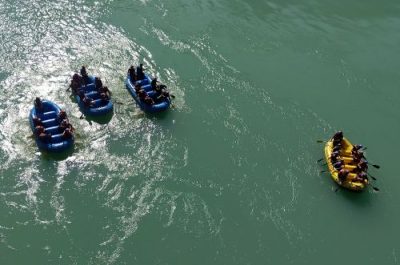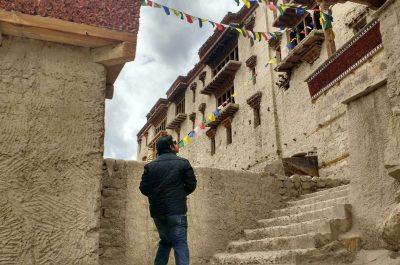






























Trip Overview
Start – Shimla
Finish – Manali
Destination – Spiti Valley
Theme – Adventure
Duration – 8 Nights 9 days
Category – #adventure #culture #spiritual #roadtrip #leisure #slowtravel #trekking
Style – #comfort #backpacking #diy #fixed departure
Trip Summary
“Start your journey where the road ends! Glory lies beyond the ends!” – Mehmet Murat ildan
The name “Spiti” means “The middle land”, i.e. the land between Tibet and India. Spiti, just like Ladakh, is also a cold desert. Spiti is still untouched as it has just recently opened its arms to tourists. Surrounded by a pristine and scenic view, there are ample opportunities to go on treks and visit the monasteries, some of which are 1000 years old. Not only this, the difficult, offroads and sometimes no roads are meant for adrenaline junkies who could ride all the way to Spiti which is a thrilling experience in itself.
Why you will love this trip?
- How to reach a place when the nearest airport (Kullu) is around 250 km, nearest railhead (Kalka) is around 500 km and a road stretch from one side (Manali – Kunzum pass – Kaza) is open only for four and half months. That’s the beauty of Spiti valley. It offers one of the best adventurous and treacherous road trips both at the same time.
- Roads of Spiti – off roads, dangerous roads, and at all no roads.
- Less crowded – due to difficulty of access. Best suited for adventure travelers, motorcycle journeys.
- Buddhist monasteries and the Buddhist culture.
- Chance to see the most shy predator ie Snow Leopard.
Is this trip right for you?
- Spiti valley is situated at 3000m above sea level. It could get difficult for those suffering from breathing problems or asthma to take this trip.
- Old age people and women suffering with arthritis should avoid staying in camp as it requires a lot of walking.
- Families having infants and children up to 6 years of age should avoid travelling to Spiti
- This trip requires a lot of road travel which is very hard for people suffering from back aches.
- Spiti is known for its unpredictable and harsh weather conditions . So,be prepared accordingly.
- Don’t travel to high passes if you feel something is not correct with your body.
Itinerary
Congratulations you have just begun the most adventurous trip of your life.
After arriving in Shimla you can opt for some café hopping as Shimla has some of the best cafes and go for some sightseeing . Make sure you get acclimated to the weather. Cross check your checklist for Spiti so that you don’t miss out on anything or else buy from the market.
Today, we start our trip to Spiti by enjoying the mountainous terrain. On the way, enjoy the beauty of popular places like Kufri, Narkanda & Rampur. Enjoy the evening stay in Kalpa.
Wake up to another beautiful day in Kinnaur full of natural beauty. After breakfast at the homestay/hotel and proceed towards Tabo. Enroute Tabo you’ll visit Nako village and the famous Nako Lake. The Nako lake is usually frozen in winters and this makes it a spectacular sight to see. After visiting Nako, proceed further towards Tabo. Overnight stay at Tabo.
Enjoy the beautiful morning in Tabo exploring the Tabo Monastery and Tabo Caves. The Tabo Monastery is one of the oldest monasteries in Spiti Valley. There are meditation caves above the Tabo village which are carved out of the mountains and were used for meditation by the monks.
Leave Tabo and head towards Dhankar village. Visit the Dhankar monastery and make sure to enjoy the view of the Spiti river from the top of the Dhankar Castle. After Dhankar head towards Pin valley for sightseeing. The group will reach Kaza in the evening for overnight stay and dinner.
After breakfast at the homestay, visit the famous Kee monastery. Kee monastery is one of the oldest monasteries in this region. It is also one of the oldest and most revered monasteries in the area. After kee Monastery proceed towards Kibber. Kibber village is most popular during winters as during this period a variety of Himalayan wildlife comes down from the higher mountains.
Just 5 kms ahead of Kibber is the iconic Chicham Bridge, which is one the highest bridges in Asia.
We return back to Kaza for a night stay.
Today we will visit the highest village in Asia, Komic. We will visit the highest post office in Asia i.e. Hikkim. One can send photos and postcards from Hikkim to their loved ones. Langza village is also known as the Fossil village for its richness in fossils. Evening, we get back to Kaza. Night stay in Kaza.
The most astounding and adventurous day of our journey. We start our day to reach Chandratal by crossing Kunjom pass. We start early and after driving on off roads and at some places with no roads at all, we reach the spot of the day! Chandratal, also known as Moon’s lake, is known for its picturesque beauty. What makes it unique is that it is a land-locked lake. After enjoying our time at the lake, we hike up to the campsite and night stay in camps. One can see clear milky way in open sky.
We start our journey to Manali as early in the morning as possible. There are various river streams on the way which can be dangerous to cross around noon. We almost ride on the river bed for the most part of our journey. We reach Manali by evening. We enjoy our dinner remembering the adventurous trip.
Inclusions
Meals
7 Breakfast
6 dinner
Transport - 6 seater SUV / 10 seater tempo traveller
Shimla - Narkanda - Rampur - Reckongpeo - Pooh - Khab - Nako - Chango - Sumdo - Hoorling - Tabo - Attargo - Kaza - Rangrik - Hanse - Losar - Kunjum Pass - Chandra taal - Batal - Chota Darra - Chatru - Gramphoo - Rohtang pass - Manali
Accomodation
7 nights in hotels/ guest houses/ homestay
1 night in camp.
Add on activities (Chargeable)
1. Adventure activities - rafting/ rock climbing / trekking.
2. Entry permits.
3. Bike/scooter/ mountain bicycle on rent.
Exclusions
- Meals not mentioned in inclusions.
- Transport that is not mentioned in inclusions.
- Any porter charges
- Any entry fees to monuments/ wildlife region/trek
- Any expense of personal nature packaged drinking water/ phone calls/ laundry/camera,etc
- Any kind of travel insurance.
- Costs arising due to force majeure
- Anything which is not mentioned in the inclusions.
Essential Trip Information
Things to do in this trip? What weather you can expect during the trip? What are the best months to visit? What to pack and what not to?

